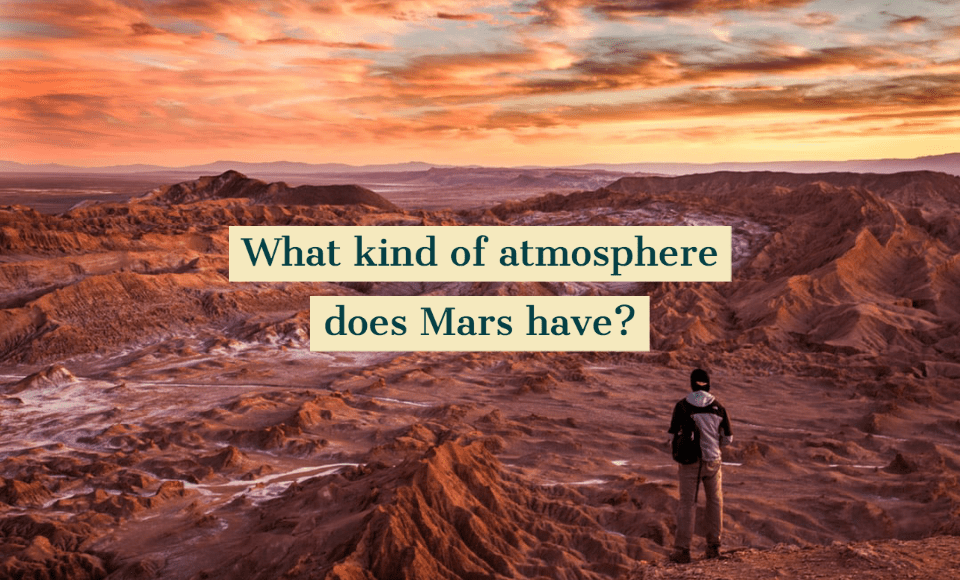In simple words, an atmosphere for a planet or star is the layer of gases that surround it. These gases stay in place due to the gravitational force of the planet/star. For our Earth, the atmosphere is what makes the planet suitable for life to flourish. If we didn’t have just the right mixture of certain gases in this atmosphere, the exposure to the Sun will be too little or too much. This could either burn us or freeze us to death (assuming that the conditions allowed us to exist at all).
Most other planets also have atmosphere, though there are some exceptions (such as Mercury). Many astronomers are fascinated with Mars, as this seems to be a planet that might have the potential of supporting life after Earth. However, the atmosphere of Mars is the biggest obstacle here, as it’s certainly quite an inhospitable one.
The thin Martian atmosphere is composed of 95% carbon dioxide, 2.7% nitrogen, 1.6% argon and traces of several other gases, including 0.15% oxygen. The abundance of CO2 is simply forbidding. Besides, the surface atmospheric pressure is less than 1% of the Earth’s atmospheric pressure. However, this pressure does vary by season because most of the atmosphere becomes frozen at the planet’s polar caps during the winters. A jet plane flying at about 1,00,000 feet (30,500 meters) from the Earth’s surface would encounter an atmospheric pressure similar to the surface of the red planet Mars.
Temperatures on Mars vary widely between day and night, winter and summer, mainly because it is about 80 million kilometers farther from the Sun than the Earth. In the northern hemisphere, summer temperatures range from a low of -88 degrees Celsius just before dawn to a high of -12 degrees Celsius in the mid afternoon. Polar temperatures during the winter drop as low as -140 degrees Celsius.
If an astronaut stepped from his spacecraft onto the Martian surface without protection, he would suffocate from the lack of oxygen after only half a minute or so — long before this time has elapsed, he would freeze from the cold or would get scorched by cosmic radiation, the influx of which is about 100 times as intense as that on Earth. Luckily, the radiation through the thin atmosphere is not enough to stop the Mars rovers from doing their job.
At one point, the atmosphere around Mars was thicker, allowing water to be present on its surface. While satellites can find evidence of that water today, it’s now either long gone or so scarce that our space authorities are unable to pick it up. The past existence of water points to a possibility of actual life on the planet in a long-gone era. We have orbital pictures that show us wide river-like plains and even some boundaries that might have been oceans at some point. Mars rovers have also found some water-soaked rocks on the surface of Mars, including clay and hematite.
Now, however, the atmosphere is definitely too thin to support any kind of life form. It’s not clear just why the atmosphere of Mars thinned over time, though the main theory refers to the light gravity of the planet along with an absence of any global magnetic field. These made the atmosphere very vulnerable to the solar wind pressure. As a result, the rays from the sun worked away the lighter molecules over time and thinned the atmosphere. According to some other researchers, there might have been a large impact from a small body of matter that could have demolished some of the atmosphere.
Even if the atmosphere of Mars was supportive of any life from, the planet itself presents a lot of difficulties. The unpredictable and extreme climate change is on discouraging factor, which the water vapor, dust storms, and ice caps are just a few others. Sometimes, the dust storms are so powerful and vast that they coat the whole planet and hide it for several months.
Additional reading:
- Atmosphere of Mars (Wikipedia)
